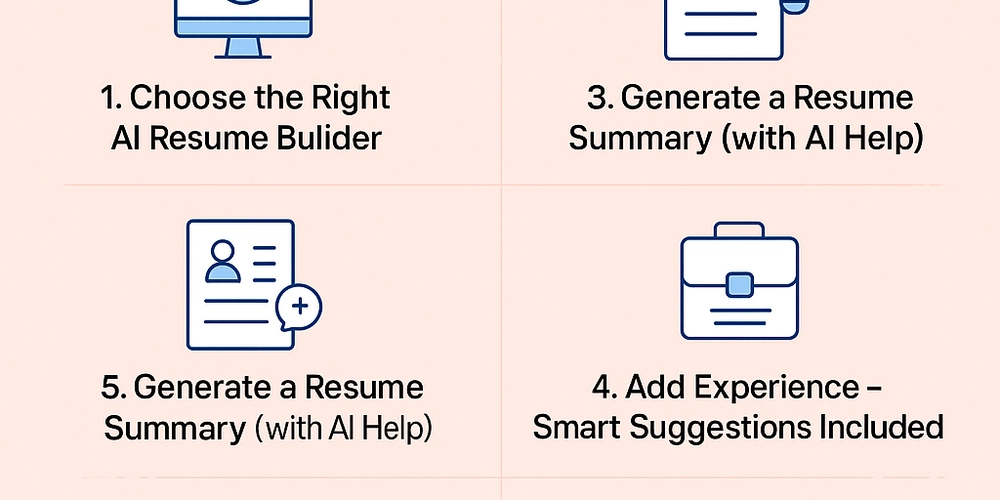OpenAI Unleashes Next-Gen Models: GPT-4.1 and o-Series Explained
OpenAI just dropped a significant update in mid-April 2025, rolling out two new families of models: the GPT-4.1 series via the API and the o-series reasoning models (o3 and o4-mini) across ChatGPT and the API. These releases mark a notable step forward in capability, efficiency, and specialized function, effectively replacing or upgrading several existing models. Let's break down what's new and how it compares. 1. The GPT-4.1 Series: Powering the API This new family (gpt-4.1, gpt-4.1-mini, gpt-4.1-nano) is primarily focused on enhancing performance for API users, replacing the gpt-4.5-preview. Key Improvements: Enhanced Coding: Significant gains, reportedly outperforming GPT-4o on benchmarks like SWE-bench Verified. Superior Instruction Following: Better adherence to complex prompts. Massive Context Window: Up to 1 million tokens for all models in the series. Updated Knowledge: Refreshed knowledge cutoff (May/June 2024). Model Comparison: New Model Key Features Replaces/Compares To Key Differences vs. Predecessor gpt-4.1 Flagship, complex tasks, 1M context, top coding gpt-4.5-preview Direct replacement; Improved coding, instruction following, updated knowledge. gpt-4.1-mini Balanced speed/cost/intelligence, 1M context gpt-4o (partially) Beats gpt-4o on many benchmarks, faster, cheaper. (Note: gpt-4o is also getting 4.1 updates) gpt-4.1-nano Fastest, cheapest, low-latency tasks, 1M context (New Tier) Offers extreme efficiency for simpler tasks while retaining a large context window. Availability: Primarily API-only. Fine-tuning is available for gpt-4.1 and gpt-4.1-mini on Azure OpenAI. While gpt-4o in ChatGPT benefits from these improvements, the distinct gpt-4.1 models offer dedicated performance tiers via the API. 2. The o-Series: Advancing Reasoning and Agency The new reasoning models, o3 and o4-mini, are designed to "think longer" and tackle complex, multi-step problems, particularly excelling in agentic tool use. They replace o1, o3-mini, and o3-mini-high. Key Improvements: Agentic Tool Use: Can autonomously decide when and how to use all available tools (web search, Python, vision, DALL·E, custom functions via API) within a single reasoning chain. Integrated Visual Reasoning: Can "think with images," incorporating visual input directly into their reasoning process, not just observing them. Handles low-quality images better. Performance Boost: Significant improvements in coding, math, science, and visual perception benchmarks compared to previous o models. Model Comparison: New Model Key Features Replaces/Compares To Key Differences vs. Predecessor o3 Top-tier reasoning, SOTA on complex tasks (Codeforces, SWE-bench), agentic o1 Massive leap in reasoning, integrated multi-tool use, visual reasoning, superior benchmark performance across the board. o4-mini Fast, cost-efficient reasoning, strong math/coding/vision, 200k context (in) o3-mini, o3-mini-high Outperforms o3-mini, better visual/math/coding, higher usage limits, larger context window, integrated multi-tool use. Availability: Available now for ChatGPT Plus/Pro/Team users (replacing older o models in the selector). Also accessible via the API and integrated into GitHub Copilot (o4-mini for paid plans, o3 for Enterprise/Pro+). Free users can sample o4-mini with the "Think" option. Key Takeaways Specialization: OpenAI is offering more specialized models – the gpt-4.1 series for raw API power and long context, and the o-series for advanced reasoning and agentic capabilities. Performance Uplift: Both series deliver substantial performance improvements, particularly in coding, reasoning, and instruction following. Efficiency Focus: The introduction of mini and nano variants in both lines provides more cost-effective and faster options for specific needs without sacrificing core capabilities like large context windows (gpt-4.1) or strong reasoning (o4-mini). Agentic Future: The o-series marks a significant step towards more autonomous AI agents that can intelligently leverage multiple tools to solve complex problems. These updates provide developers and users with a more powerful and nuanced toolkit. The gpt-4.1 series offers refined API performance, while the o-series pushes the boundaries of AI reasoning and autonomous task execution.

OpenAI just dropped a significant update in mid-April 2025, rolling out two new families of models: the GPT-4.1 series via the API and the o-series reasoning models (o3 and o4-mini) across ChatGPT and the API. These releases mark a notable step forward in capability, efficiency, and specialized function, effectively replacing or upgrading several existing models.
Let's break down what's new and how it compares.
1. The GPT-4.1 Series: Powering the API
This new family (gpt-4.1, gpt-4.1-mini, gpt-4.1-nano) is primarily focused on enhancing performance for API users, replacing the gpt-4.5-preview.
Key Improvements:
- Enhanced Coding: Significant gains, reportedly outperforming GPT-4o on benchmarks like SWE-bench Verified.
- Superior Instruction Following: Better adherence to complex prompts.
- Massive Context Window: Up to 1 million tokens for all models in the series.
- Updated Knowledge: Refreshed knowledge cutoff (May/June 2024).
Model Comparison:
| New Model | Key Features | Replaces/Compares To | Key Differences vs. Predecessor |
|---|---|---|---|
gpt-4.1 |
Flagship, complex tasks, 1M context, top coding | gpt-4.5-preview |
Direct replacement; Improved coding, instruction following, updated knowledge. |
gpt-4.1-mini |
Balanced speed/cost/intelligence, 1M context |
gpt-4o (partially) |
Beats gpt-4o on many benchmarks, faster, cheaper. (Note: gpt-4o is also getting 4.1 updates) |
gpt-4.1-nano |
Fastest, cheapest, low-latency tasks, 1M context | (New Tier) | Offers extreme efficiency for simpler tasks while retaining a large context window. |
Availability: Primarily API-only. Fine-tuning is available for gpt-4.1 and gpt-4.1-mini on Azure OpenAI. While gpt-4o in ChatGPT benefits from these improvements, the distinct gpt-4.1 models offer dedicated performance tiers via the API.
2. The o-Series: Advancing Reasoning and Agency
The new reasoning models, o3 and o4-mini, are designed to "think longer" and tackle complex, multi-step problems, particularly excelling in agentic tool use. They replace o1, o3-mini, and o3-mini-high.
Key Improvements:
- Agentic Tool Use: Can autonomously decide when and how to use all available tools (web search, Python, vision, DALL·E, custom functions via API) within a single reasoning chain.
- Integrated Visual Reasoning: Can "think with images," incorporating visual input directly into their reasoning process, not just observing them. Handles low-quality images better.
- Performance Boost: Significant improvements in coding, math, science, and visual perception benchmarks compared to previous
omodels.
Model Comparison:
| New Model | Key Features | Replaces/Compares To | Key Differences vs. Predecessor |
|---|---|---|---|
o3 |
Top-tier reasoning, SOTA on complex tasks (Codeforces, SWE-bench), agentic | o1 |
Massive leap in reasoning, integrated multi-tool use, visual reasoning, superior benchmark performance across the board. |
o4-mini |
Fast, cost-efficient reasoning, strong math/coding/vision, 200k context (in) |
o3-mini, o3-mini-high
|
Outperforms o3-mini, better visual/math/coding, higher usage limits, larger context window, integrated multi-tool use. |
Availability: Available now for ChatGPT Plus/Pro/Team users (replacing older o models in the selector). Also accessible via the API and integrated into GitHub Copilot (o4-mini for paid plans, o3 for Enterprise/Pro+). Free users can sample o4-mini with the "Think" option.
Key Takeaways
- Specialization: OpenAI is offering more specialized models – the
gpt-4.1series for raw API power and long context, and theo-seriesfor advanced reasoning and agentic capabilities. - Performance Uplift: Both series deliver substantial performance improvements, particularly in coding, reasoning, and instruction following.
- Efficiency Focus: The introduction of
miniandnanovariants in both lines provides more cost-effective and faster options for specific needs without sacrificing core capabilities like large context windows (gpt-4.1) or strong reasoning (o4-mini). - Agentic Future: The
o-seriesmarks a significant step towards more autonomous AI agents that can intelligently leverage multiple tools to solve complex problems.
These updates provide developers and users with a more powerful and nuanced toolkit. The gpt-4.1 series offers refined API performance, while the o-series pushes the boundaries of AI reasoning and autonomous task execution.




























![[Webinar] AI Is Already Inside Your SaaS Stack — Learn How to Prevent the Next Silent Breach](https://blogger.googleusercontent.com/img/b/R29vZ2xl/AVvXsEiOWn65wd33dg2uO99NrtKbpYLfcepwOLidQDMls0HXKlA91k6HURluRA4WXgJRAZldEe1VReMQZyyYt1PgnoAn5JPpILsWlXIzmrBSs_TBoyPwO7hZrWouBg2-O3mdeoeSGY-l9_bsZB7vbpKjTSvG93zNytjxgTaMPqo9iq9Z5pGa05CJOs9uXpwHFT4/s1600/ai-cyber.jpg?#)













































































































































![[The AI Show Episode 144]: ChatGPT’s New Memory, Shopify CEO’s Leaked “AI First” Memo, Google Cloud Next Releases, o3 and o4-mini Coming Soon & Llama 4’s Rocky Launch](https://www.marketingaiinstitute.com/hubfs/ep%20144%20cover.png)




































































































































































































![Rogue Company Elite tier list of best characters [April 2025]](https://media.pocketgamer.com/artwork/na-33136-1657102075/rogue-company-ios-android-tier-cover.jpg?#)








































































_Andreas_Prott_Alamy.jpg?width=1280&auto=webp&quality=80&disable=upscale#)




























































































![What’s new in Android’s April 2025 Google System Updates [U: 4/18]](https://i0.wp.com/9to5google.com/wp-content/uploads/sites/4/2025/01/google-play-services-3.jpg?resize=1200%2C628&quality=82&strip=all&ssl=1)










![Apple Watch Series 10 Back On Sale for $299! [Lowest Price Ever]](https://www.iclarified.com/images/news/96657/96657/96657-640.jpg)
![EU Postpones Apple App Store Fines Amid Tariff Negotiations [Report]](https://www.iclarified.com/images/news/97068/97068/97068-640.jpg)
![Apple Slips to Fifth in China's Smartphone Market with 9% Decline [Report]](https://www.iclarified.com/images/news/97065/97065/97065-640.jpg)


































































































































